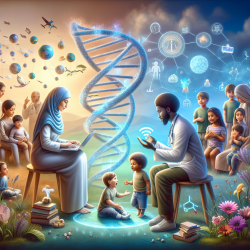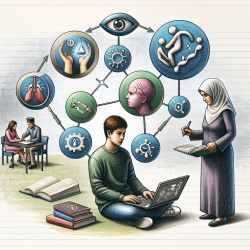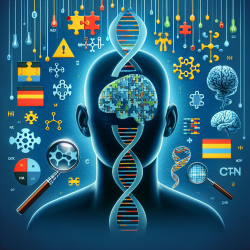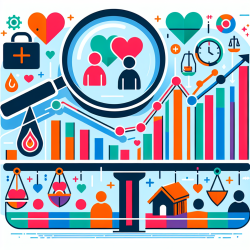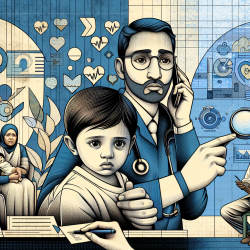Introduction
The complexity of Autism Spectrum Disorder (ASD) extends beyond its behavioral manifestations, delving into the genetic underpinnings that influence its development. The research article titled "Association of genes with phenotype in autism spectrum disorder" provides a comprehensive review of the genetic architecture associated with ASD. This blog aims to translate these findings into actionable insights for practitioners, particularly those involved in speech-language pathology and online therapy services like TinyEYE.
Understanding the Genetic Landscape of ASD
The study emphasizes the heterogeneity of ASD, highlighting the identification of numerous risk genes and genetic pathways that contribute to its pathophysiology. These genes are implicated in various biological processes such as gene transcription regulation, neuronal activity modulation, and synaptic plasticity. Practitioners should be aware that these genetic factors can significantly influence the presentation and severity of ASD symptoms in children.
Implications for Practitioners
For speech-language pathologists and therapists, understanding the genetic basis of ASD can enhance the development of tailored interventions. Here are some key takeaways:
- Early Diagnosis and Intervention: The identification of genetic markers can aid in the early diagnosis of ASD, allowing for timely intervention. Practitioners can advocate for genetic testing as part of a comprehensive assessment for children displaying early signs of ASD.
- Personalized Therapy Plans: Knowledge of specific genetic variations can inform personalized therapy plans that cater to the unique needs of each child. For instance, interventions can be designed to target specific cognitive and communication deficits associated with particular genetic profiles.
- Collaboration with Geneticists: Practitioners should consider collaborating with geneticists to better understand the implications of genetic findings. This interdisciplinary approach can enhance the effectiveness of therapy by integrating genetic insights into treatment planning.
Encouraging Further Research
The genetic research on ASD is continually evolving, and practitioners are encouraged to stay informed about the latest developments. Engaging in ongoing education and research can help practitioners refine their skills and improve outcomes for children with ASD. Consider the following actions:
- Participate in Workshops and Conferences: Attending professional development events focused on ASD and genetics can provide valuable insights and networking opportunities.
- Contribute to Research: Practitioners can contribute to research by participating in studies or collaborating with academic institutions. Sharing clinical observations and outcomes can enrich the collective understanding of ASD.
- Leverage Technology: Utilize online platforms and resources to access the latest research and connect with experts in the field. Platforms like TinyEYE can serve as a bridge between research and practice, facilitating the dissemination of new knowledge.
Conclusion
The genetic insights into ASD offer a promising avenue for enhancing therapeutic interventions and improving outcomes for children. By integrating genetic knowledge into practice, speech-language pathologists and therapists can provide more effective and personalized care. As research continues to unfold, practitioners are encouraged to remain engaged with the scientific community and contribute to the advancement of ASD treatment.
To read the original research paper, please follow this link: Association of genes with phenotype in autism spectrum disorder.
